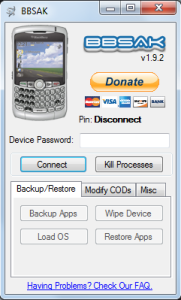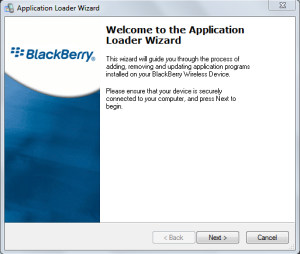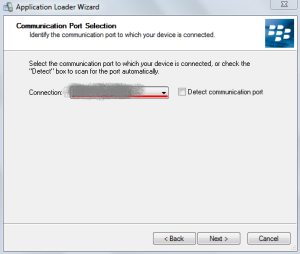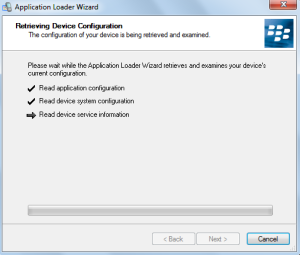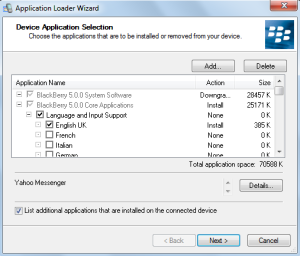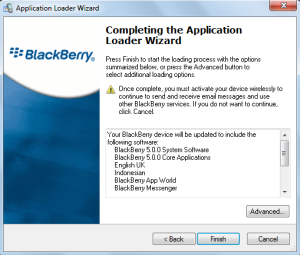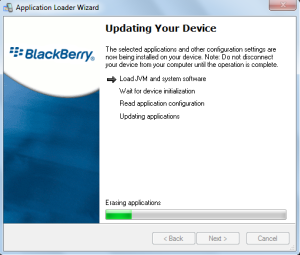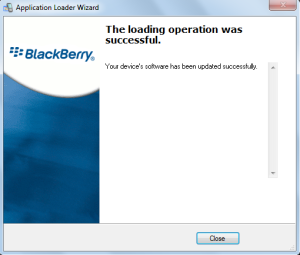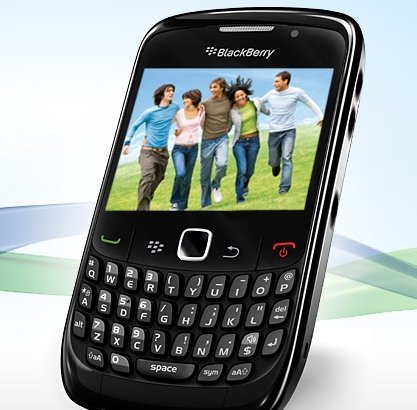
Jika anda pernah mengalami BB lemot alias sering hang, saya akan coba share cara menginstall ulang OS yang merupakan salah satu cara mengatasi hal itu. Tahapan berikut saya coba untuk tipe BB 8520. Ada beberapa hal yang harus disiapkan antara lain :
- Komputer atau Laptop
- Kabel Data
- Blackberry Desktop Manager
- Base OS Blackberry ( OS 5)
- BBSAK ( Blackberry Swiss Army Knife )
Download semua software yang diperlukan dan install di komputer atau laptop. Hapus file vendor.xml di dalam folder C:\Program Files\Common Files\Research In Motion\AppLoader\
Setelah itu hubungkan BB dengan PC atau Laptop menggunakan Kabel Data. Lalu wipe BB dengan BBSAK. Perlu diingat wipenya bukan di BB melainkan via PC. Caranya, buka Software BBSAK dan pilih Wipe Device seperti gambar di bawah ini.
Jika proses wipe sukses maka BB akan booting dan akan menampilkan pesan Error 507. Jangan takut, justru error inilah yang sedang kita cari. Error 507 artinya tidak ada os yang terpasang di handheld BB.
Lanjut, jalankan Loader.exe yang ada di dalam folder C:\Program Files\Common Files\Research In Motion\AppLoader\ tampilan awalnya seperti di bawah ini.
Langsung klik Next saja. Jika BBterbaca akan tampil jendela Communication Port Selection seperti di bawah ini (pastikan PIN nya sama).
Next, ke proses selanjutnya yakni “Retrieving Device Configuration”. Di proses ini tidak ada yang dilakukan kecuali mengunggu. Jika diperhatikan mungkin BB kamu akan restart.
Langkah selanjutnya memasuki Device Application Selection. Pilih aplikasi apa saja yang akan diinstal di BB Twitter, Facebook, BBM, Game dan sebagainya.
Setelah yakin klik Next, kemudian akan tampil jendela Konfirmasi.
Kemudian klik Finish, maka proses install ulang OS BB akan berjalan. Mungkin handheld akan beberapa kali restart. Tampilannya seperti di bawah ini.
Tunggu saja, mungkin proses ini akan memakan waktu yang lama tergantung dari spek komputer yang digunakan dan juga banyaknya aplikasi yang dipilih di langkah 4. Jika semua sukses tampil jendela sepeti ini.
Selesai, proses instalasi ulang OS Blackberry. Mudah-mudahan artikel ini membantu buat temen – temen yang mengalami hal yang sama. Kalau Blackberry bermasalah usaha kita akan tersendat, orderan hilang 🙂 . Untuk mendapatkan informasi – informasi yang bermanfaat follow @wawanhermawan09 @pakarkreatif
#KreatifDapatDuit

